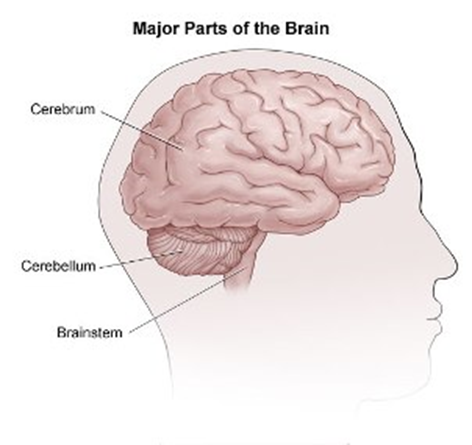Medium
- WCSAP Webpage
Topic
- Advocacy
- Child Sexual Abuse
Often in advocacy we are asked by survivors “why didn’t I fight? Why am I not a fighter?” This information can be useful to share with survivors and help them be able to think more kindly about their body/brain’s reaction to the violence they experienced.
The Amygdala's Role in Stress Response
The brain’s job is to take care of the body. The brain is divided into four key areas: the neocortex/cerebrum, the cerebellum, the limbic system, and the brainstem. Each area focuses on specific tasks that are beneficial for survival. One of the limbic system’s key roles is responding to stress. This includes assessing and preparing for dangerous stimulus through the amygdala and the hypothalamus.

If a threat is likely, the amygdala sounds the alarm to the rest of the brain that energy may need to be diverted to prepare to respond to the danger. Additionally, as the likelihood of the threat increases, the neocortex of the brain shuts down. The benefit of the neocortex going offline is to conserve energy and to allow the limbic system to do whatever it unconsciously needs to do to ensure the best chances of survival as quickly as possible.
When it appears to the amygdala there is a threat, it redirects the hypothalamus to begin producing extra cortisol and adrenaline. The sole purpose of these hormones is to motivate and produce movement in the body, shown in the response of fight or flight. Our brain’s first plan for our bodies when in danger is action. So much so, that if the initial amount of cortisol and adrenaline is not adequate to either subdue the threat, or flee successfully, the hypothalamus continues to flood the body with them. Trauma is produced when the brain is unable to move the body.
Freeze (or collapse) is the last resort of any brain and body. It comes about because the body has become too flooded with cortisol. This is a last ditch effort to conserve all energy because the danger is unavoidable. After the attack, the brain will need the body to have enough energy to try to move into action again. The person now has to be able to get up and find help. That requires energy.
Automatic Nervous System States of Arousal and Corresponding Emotional States

The automatic nervous system refers to actions the body takes on its own, and how it may feel for a person experiencing them.
- Arrest and alert: associated with curiosity.
- Stiffen and orient: associated with focused attention, interest, and preparedness.
- Assess: associated with intense interest, friendliness, or repulsion. This assessment is informed by what our body remembers as well as our personal histories.
- Approach or avoid: associated with pleasure and displeasure.
- Fight or Flight- experienced as fear.
- Freeze, as in “scared stiff”- experienced as terror.
- Collapse or “fold”- associated with helpless/hopeless horror.1
In the more intense activation states (5-7), there is an abrupt shift to the powerfully compelling emotions of fear, rage, terror, and horror that erupt into all-out-action, immobilization, or collapse. The brain's goal is to successfully complete the response with either fight or flight. However, when these active responses are thwarted we then move on to freeze and collapse. The biology basis for trauma occurs when a person experiences freeze and collapse.